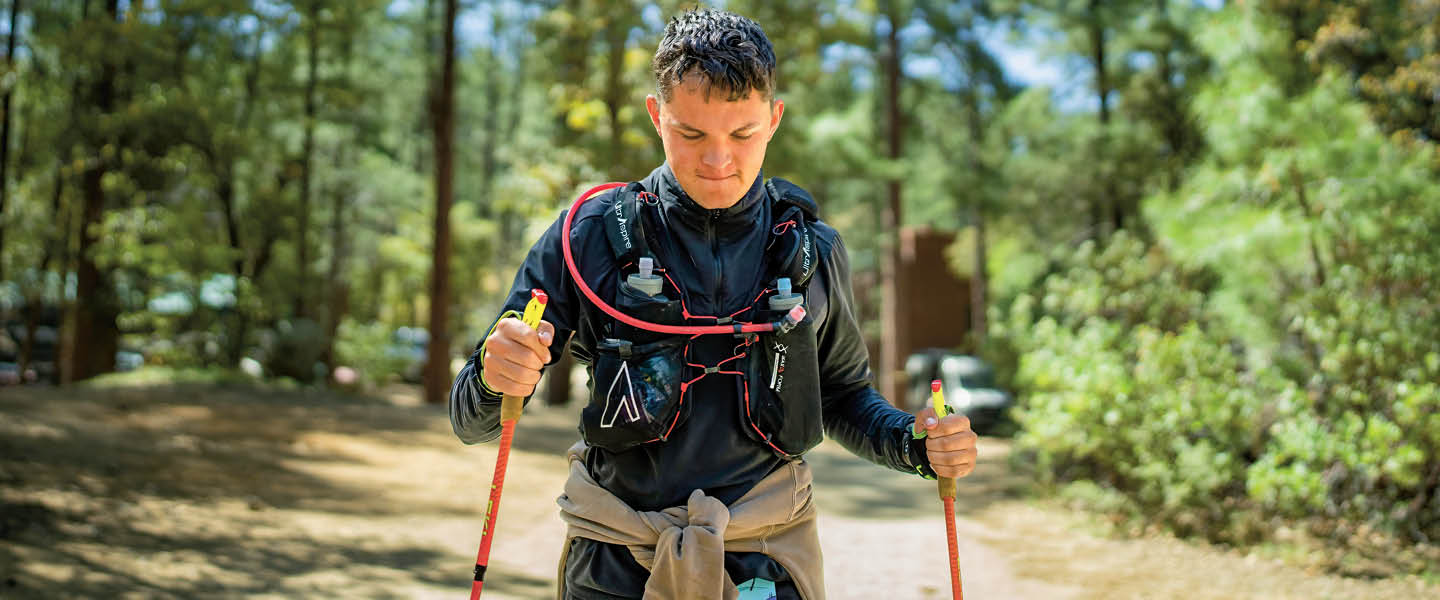Zach Bates waited quietly in the morning twilight, wearing the gear he’d need to cover 250 miles: fabric guards to keep the dust out of his shoes, a face covering, sunglasses, a hydration pack, hiking poles, and a hat with a neck flap to block the sun. The race, just moments away, would be the hardest thing he’d ever taken on.
“Cocodona 250,” said the banner at the starting line. “Adventure awaits.”
The course was well-marked, and Zach, 22, had a digital tracking device. But his mother, Rana, was worried. Her son has autism and is prone to losing his way. Rana had found another competitor who was willing to run alongside Zach, but now she couldn’t find him. She stood on her tiptoes, searching through a sea of 278 participants.
He “was supposed to meet Zach at the starting line,” she said.
Then the gun went off, and Zach disappeared into the swell of competitors, jogging up a steep canyon of winding rocky paths.
The Cocodona 250, which takes place every May in Arizona, is daunting for anyone, given the punishing distance and the stress of running on a rugged trail day and night. But it was a particularly tough test for Zach, whose autism gives him fierce concentration and determination but also comes with limitations, like difficulty multitasking, communicating his needs, and socializing.
Zach Bates waited quietly in the morning twilight. He was wearing the gear he’d need to cover 250 miles: fabric guards to keep the dust out of his shoes, a face covering, sunglasses, a hydration pack, hiking poles, and a hat with a neck flap to block the sun. The race was just moments away. It would be the hardest thing he’d ever taken on.
“Cocodona 250,” said the banner at the starting line. “Adventure awaits.”
The course was well-marked, and Zach, 22, had a digital tracking device. But his mother, Rana, was worried. Her son has autism and can easily lose his way. Rana had found another competitor who was willing to run alongside Zach, but now she couldn’t find him. She stood on her tiptoes, searching through the crowd of 278 participants.
He “was supposed to meet Zach at the starting line,” she said.
The gun went off. Zach disappeared into the large group of competitors, jogging up a steep canyon of winding rocky paths.
The Cocodona 250, which takes place every May in Arizona, is intimidating for anyone. The race is long and there is the stress of running on a rugged trail day and night. But it was a particularly tough test for Zach. His autism gives him fierce concentration and determination but also comes with limitations, like difficulty multitasking, communicating his needs, and socializing.

